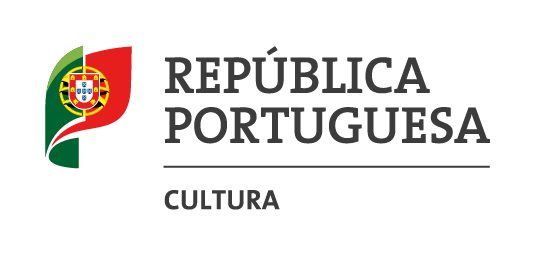Organização / Organization

PT
A Representação Oficial Portuguesa na 57ª Exposição Internacional de Arte - La Biennale di Venezia - é da responsabilidade do Ministério da Cultura e comissariada pela Direção Geral das Artes.
José Pedro Croft é um artista singular no panorama nacional. Um autor de uma elegância e discrição inigualáveis que vive intensamente dedicado ao detalhe e à precisão formal do seu trabalho.
Com Medida Incerta somos convidados a percorrer a história das artes, mas também o percurso expositivo e a experiência do visitante; nela somos sempre acompanhados pelo poder do ato criativo de José Pedro Croft. Da escultura à instalação, do desenho à fotografia, da comunicação à implantação ou transporte das peças, nada foi deixado ao acaso. Todo o processo, recebeu a marca do artista. Logo, podemos definir, em certa medida, o trabalho de José Pedro Croft como uma obra total.
Em toda esta viagem de criação existem intervenientes absolutamente incontornáveis. O maior cúmplice de José Pedro Croft é, naturalmente, João Pinharanda, o curador que permitiu, ao artista e a nós – Ministério da Cultura e Direção-Geral das Artes, criar e apresentar Medida Incerta na Bienal de Arte de Veneza este ano.
Os eventos culturais internacionais são palcos únicos no percurso e no posicionamento de um país. O campo de possibilidades que se apresenta na criação de um projeto que, por um lado represente um autor e por outro, seja o espelho da identidade cultural de um território, são em si mesmos uma experiência e uma oportunidade imensas. Para Portugal, estes momentos de apresentação, de diálogo e de cruzamento dos nossos artistas com contextos internacionais de referência são prioritários na consubstanciação das políticas culturais externas. São ainda o culminar de intensos meses de trabalho que reúnem inúmeros agentes facilitadores, patrocinadores, apoiantes e colaboradores, que gostaríamos aqui de enaltecer pelo facto de, connosco, criarem Medida Incerta, que este ano inscreve Portugal no mundo.
Luís Filipe de Castro Mendes
Ministro da Cultura
Designada pelo Ministério da Cultura para organizar a representação oficial na Bienal de Veneza, a Direção-Geral das Artes (DGArtes) indicou o crítico e historiador de arte João Pinharanda como curador que, por seu lado, escolheu o escultor José Pedro Croft para dar obra ao pavilhão de Portugal na 57ª Exposição Internacional de Arte - La Biennale di Venezia.
Embora participante regular nas bienais desde os anos 80, Portugal não tem pavilhão em lugar fixo, como é o caso de muitos outros países europeus que detêm um espaço permanente nos Giardini de Veneza. Esta condição nómada tem estimulado investir em soluções temporárias que contornam, criativa e conceptualmente, a ausência de um território demarcado e constante, porventura mais seguro e previsível, aonde os artistas se apresentam condicionalmente.
Em 2016, os curadores Roberto Cremascoli e Nuno Grande projetaram a representação do país para a Ilha da Giudecca, instalando o pavilhão português num local em que os pressupostos da 15ª Bienal de Arquitetura tomaram um significado real: a vasta e internacional obra de Álvaro Siza no âmbito da habitação social foi documentada e mostrada no estaleiro de um complexo habitacional, desenhado pelo galardoado arquiteto para a Giudecca, em torno do Campo di Marte e junto dos edifícios de outros arquitetos de renome internacional. Assim o pavilhão de Portugal estimulou o recomeço da empreitada inesperadamente interrompida em 2010. Uma vez iniciada esta direção – de aliar a exposição para a Bienal de Arquitetura ao desejo de concluir o projeto de Álvaro Siza e ver as casas entregues aos habitantes - considerou-se pertinente desafiar o artista convidado para a exposição de arte de 2017 a criar uma obra que mantivesse proximidade com o bairro e ampliasse a noção de espaço urbano de qualidade e vivido já inerente na conceção de Álvaro Siza.
Neste contexto a representação oficial portuguesa desenhou-se numa perspetiva de biénio (2016 e 2017) na expetativa de demonstrar um diálogo profícuo entre a arquitetura e escultura na reabilitação e vivência real de uma zona da cidade periférica em relação ao circuito mais turístico e mainstream, promovendo novos percursos e debates no âmbito das grandes exposições internacionais de Veneza.
Em 2017 a DGArtes estabeleceu um precioso protocolo com a Câmara Municipal de Veneza para sediar o pavilhão de Portugal nos jardins da Villa Hériot, em estreita vizinhança com o projeto de Álvaro Siza. Durante seis meses, tão imponentes quanto intangíveis esculturas de José Pedro Croft habitarão admiravelmente estes jardins, atraindo os visitantes da 57ª Exposição Internacional de Arte – La Biennale di Venezia para um espaço de lazer e contemplação estimado pela população local. Sob a vitalidade da arte contemporânea novas relações de escala, de perspetiva e de fruição terão lugar.
Como marca do encontro raro que atravessa as duas exposições internacionais, o arquiteto Álvaro Siza convidou José Pedro Croft a integrar na cidade, a título definitivo, uma obra desenhada para o entorno urbano concebido pelo arquiteto para completar este complexo de habitações sociais na Giudecca.
Paula Varanda
Diretora-Geral das Artes
![]()
EN
The Official Portuguese Representation at the 57th International Art Exhibition - La Biennale di Venezia - was organized by the Ministry of Culture of Portugal and commissioned by the Directorate-General for the Arts.
José Pedro Croft is a unique artist on the international scene; a man of an unrivalled elegance and discernment, notable for his intense focus on detail and formal precision in his work.
In Medida Incerta (Uncertain Measure) visitors are invited to look at the history of the arts, to travel through the exhibition and experience it; throughout, we are always accompanied by the power of José Pedro Croft’s creative act. From sculpture to installation, drawing to photography, from communication to the organisational arrangements and the transportation of the works, nothing has been left to chance. The whole process bears the artist’s imprint. As such, we can, to some degree, define the work of José Pedro Croft as a total artwork.
This creative journey has been impacted by various people who have proven themselves to be absolutely in- dispensable. José Pedro Croft’s greatest ally has, of course, been João Pinharanda, the curator who enabled the artist and us, at the Ministry of Culture and General Directorate for the Arts, to bring forth and present medida incerta at the Venice Art Biennale this year.
International cultural events serve as unique stages for charting the course of a country and positioning it within an international context. The field of possibilities that arises with the creation of a project that both represents an artist’s work and holds up a mirror to the cultural identity of a particular territory is in itself a great opportunity and experience. For Portugal, these moments of showcasing work, fostering dialogue and enabling our artists to cross paths with key international scenes are a priority when it comes to consolidating external cultural policy. They are also the culmination of many months of intense work in bringing together count- less facilitators, sponsors, supporters and collaborators, who we would like to acknowledge here for having helped us in putting together Medida Incerta, which this year will mark Portugal’s presence in the world.
Luís Filipe de Castro Mendes
Minister of Culture
Designated by the Ministry of Culture to organise the official Portuguese representation at the Venice Biennale, the Directorate General for the Arts (DGArtes) has appointed critic and art historian João Pinharanda to act as curator for the work of sculptor José Pedro Croft to be featured at the Portuguese pavilion at the 57th international art exhibition of La Biennale di Venezia.
Although a regular participant at the Biennale since the 1980s, Portugal has no permanent pavilion in the Giardini of Venice, unlike many other European countries that enjoy a permanent space. This nomadic condition has stimulated temporary solutions where artists present themselves by creatively and conceptually circumventing the absence of a demarcated, constant (and perhaps more secure and predictable) site.
In 2016, curators Roberto Cremascoli and Nuno Grande projected the country’s representation towards the Giudecca Island; they installed an exhibition about the work of Álvaro Siza on social housing in the unfinished habitation complex he designed around Campo di Marte, leading to the resumption of the project unexpectedly interrupted in 2010 and therefore combining the exhibition of the Architecture Biennale with the wish to finish the project and give the houses to the inhabitants. Within such a frame, it seemed well appropriate to challenge the artist invited to the 2017 art exhibition to create a work in close proximity to the housing complex, broadening the notion of quality urban space already inherent in Álvaro Siza’s vision.
Thus, the official Portuguese representation was conceived with a biennial perspective (2016 and 2017) creating a fruitful dialogue between architecture and sculpture in the rehabilitation and real experience of a relatively peripheral area of he city in terms of the mainstream tourist circuit, promoting new routes and debates in the context of the great international exhibitions of Venice.
In 2017, the DGArtes came to an agreement with the City Hall of Venice to host the Portuguese pavilion in the gardens of Villa Hériot, in close vicinity to Álvaro Siza’s project. For six months, the imposing and intangible sculptures of José Pedro Croft will inhabit these gardens, attracting visitors of the 57th International Art Exhibition to a space of leisure and contemplation that is valued by the local population. The vitality of contemporary art will give rise to new relations of scale, perspective and enjoyment.
As a mark of the rare encounter between two international exhibitions, architect Álvaro Siza invited José Pedro Croft to permanently integrate his work into the urban environment of the social housing complex designed by the architect at the Giudecca.
Paula Varanda
General Director for the Arts

